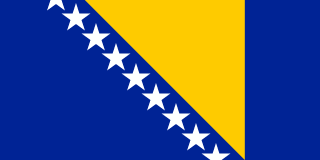

Employer of Record Guide in Switzerland
Switzerland's unique federal structure and multilingual workforce create both incredible opportunities and complex compliance challenges for global employers. Our comprehensive guide cuts through the complexity to help you hire top Swiss talent confidently and compliantly.
Capital City
Currency
Languages
Population size
Services available in this country:

Key stats and facts
Switzerland's robust economy and skilled workforce make it an attractive expansion destination, but success requires understanding the nuances of cantonal variations and local market dynamics. Here's what you need to know about tapping into this high-value talent market.
Major economic hubs
Skills in demand
Currency
Language
GDP per Capita
Standard Tax Rate
Your EOR guide in Switzerland
Swiss employment law operates on multiple levels—federal, cantonal, and municipal—creating a complex but navigable landscape for compliant hiring. This guide breaks down the essential requirements, from cantonal minimum wages to multi-tiered tax obligations, so you can build your Swiss team with confidence.
Minimum Wage
Switzerland has no federal minimum wage. However, several cantons have established their own minimum wage requirements:
| Canton | Minimum Wage (CHF/hour) | Effective Date |
|---|---|---|
| Geneva | 23.27 | November 1, 2024 |
| Neuchâtel | 20.60 | January 1, 2024 |
| Jura | 20.60 | January 1, 2024 |
| Basel-Stadt | 21.00 | January 1, 2024 |
| Ticino | 19.75 | September 1, 2023 |
Note: Most cantons without statutory minimum wages rely on collective bargaining agreements or market rates.
Payroll Cycle
- Monthly: Most common payment frequency (12 pay periods per year)
- 13th Month Salary: Customary bonus payment, often contractually required
- Payment Timing: Salaries must be paid by the end of each month
Individual Income Tax
Switzerland operates a complex tax system with federal, cantonal, and municipal taxes:
| Income Level (CHF) | Federal Tax Rate |
|---|---|
| Up to 14,500 | 0% |
| 14,500 - 31,600 | 0.77% |
| 31,600 - 41,400 | 0.88% |
| 41,400 - 55,200 | 2.64% |
| 55,200 - 72,500 | 2.97% |
| Over 269,000 | 11.5% |
Note: Cantonal and municipal taxes vary significantly. Total tax burden can range from 15-45% depending on location and income level.
Tax Residency Criteria
Individuals are considered Swiss tax residents if they:
- Reside in Switzerland for 30 days with gainful employment, or
- Reside in Switzerland for 90 days without gainful employment, or
- Have their main residence or centre of vital interests in Switzerland
Employer Social Security Contributions
Swiss employers must contribute to various social security schemes:
| Contribution Type | Employer Rate | Employee Rate | Total Rate |
|---|---|---|---|
| AHV/IV/EO (Old Age/Disability/Income Compensation) | 5.3% | 5.3% | 10.6% |
| ALV (Unemployment Insurance) | 1.1% | 1.1% | 2.2% |
| NBU (Non-occupational Accident Insurance) | 0.7-2.8% | 0% | 0.7-2.8% |
| BU (Occupational Accident Insurance) | 0.1-3.0% | 0% | 0.1-3.0% |
| Family Allowances | 1.2-3.5% | 0% | 1.2-3.5% |
| Total Employer Contribution | ~8.3-15.7% | 6.4% | ~14.7-22.1% |
Note: Rates vary by canton and industry. Additional contributions may apply for pension funds (BVG/LPP).
Working Hours
Standard working hours vary by industry and are typically defined in collective bargaining agreements:
- Office Workers: 42 hours per week
- Industrial Workers: 45 hours per week
- Retail/Service: 45 hours per week
- Daily Maximum: 9 hours (10.5 hours with overtime)
Certain senior management positions may be exempt from standard hour limitations.
Overtime Pay
- Rate: 125% of regular hourly wage (minimum)
- Threshold: Hours worked beyond contractual weekly hours
- Alternative: Compensatory time off at 125% rate (with employee agreement)
- Annual Limit: Generally 170 hours of overtime per year
Bonus Payments
- 13th Month Salary: Customary and often contractually required
- Performance Bonuses: Common in many industries
- Holiday Bonus: May be provided in addition to 13th month salary
Employment Classifications
- Full-time: Typically 80-100% of standard working hours
- Part-time: Less than 80% of standard working hours
- Temporary: Fixed-term contracts (maximum 2 years with renewals)
- Permanent: Indefinite duration contracts
Vacation Leave
- Standard Entitlement: Minimum 4 weeks (20 working days) per year
- Young Workers: 5 weeks for employees under 20 years old
- Senior Workers: 5 weeks for employees over 50 years old (in some cantons)
- Accrual: Earned proportionally throughout the year
- Payout: Must be paid out on termination if unused
Sick Leave
Sick leave entitlement depends on length of service:
| Length of Service | Sick Leave Entitlement |
|---|---|
| 1st year | 3 weeks |
| 2nd year | 1 month |
| 3rd-4th year | 2 months |
| 5th-9th year | 3 months |
| 10th-14th year | 4 months |
| 15th-19th year | 5 months |
| 20+ years | 6 months |
- Medical Certificate: Required after 3 consecutive days
- Salary Continuation: Full salary during sick leave period
Maternity Leave
- Duration: 14 weeks (98 days)
- Compensation: 80% of average salary (up to CHF 220 per day)
- Funding: Paid through social security (EO/APG)
- Job Protection: Position guaranteed upon return
Paternity Leave
- Duration: 2 weeks (10 working days)
- Compensation: 80% of average salary (up to CHF 220 per day)
- Timing: Must be taken within 6 months of birth
- Funding: Paid through social security (EO/APG)
Military/Civil Service Leave
- Entitlement: Mandatory for Swiss men (optional for women)
- Compensation: 80% of salary through income compensation scheme
- Duration: Varies based on service requirements
Other Leave Types
- Bereavement: 1-3 days (varies by relationship and canton)
- Marriage: 1-3 days
- Moving: 1 day
- Medical Appointments: Reasonable time off
Summary
| Leave Type | Duration | Compensation | Funding Source |
|---|---|---|---|
| Vacation | 4-5 weeks/year | 100% | Employer |
| Sick Leave | 3 days - 6 months | 100% | Employer |
| Maternity | 14 weeks | 80% (capped) | Social Security |
| Paternity | 2 weeks | 80% (capped) | Social Security |
| Military Service | Variable | 80% | Social Security |
Termination Types
Termination With Cause (Extraordinary Termination):
- Immediate termination without notice
- Requires serious breach of contract or misconduct
- High burden of proof on employer
Termination Without Cause (Ordinary Termination):
- Standard termination with proper notice
- No specific reason required
- Must comply with notice periods and anti-discrimination laws
Notice Period Requirements
Notice periods are based on length of service and probationary status:
| Length of Employment | Notice Period |
|---|---|
| Probationary period (up to 3 months) | 7 days |
| 1st year of service | 1 month |
| 2nd-9th year of service | 2 months |
| 10+ years of service | 3 months |
Note: Notice periods end on the last day of a calendar month.
Severance Pay
Switzerland does not mandate severance pay beyond the notice period. However:
- Collective bargaining agreements may require severance
- Individual contracts may include severance clauses
- Courts may award severance in cases of abusive dismissal
Probationary Periods
- Maximum Duration: 3 months
- Notice Period: 7 days during probation
- Restrictions: Cannot be extended beyond 3 months
- Protection: Anti-discrimination laws still apply
Final Pay Requirements
- Timing: Final salary must be paid by the end of the month following termination
- Components: Includes unused vacation pay, pro-rated 13th month salary, and any outstanding bonuses
- Work Certificate: Employer must provide a work certificate upon request
Anti-Discrimination & Wrongful Dismissal
Termination is prohibited during:
- Sick leave periods
- Maternity leave
- Military service
- For discriminatory reasons (gender, age, religion, etc.)
Violations can result in compensation awards of up to 6 months' salary.
National Public Holidays
Switzerland has relatively few national public holidays, with most holidays determined at the cantonal level:
| Holiday | Date | National/Cantonal |
|---|---|---|
| New Year's Day | January 1 | National |
| Good Friday | Varies | Most cantons |
| Easter Monday | Varies | Most cantons |
| Labour Day | May 1 | Some cantons |
| Ascension Day | Varies | Most cantons |
| Whit Monday | Varies | Most cantons |
| Swiss National Day | August 1 | National |
| Christmas Day | December 25 | National |
| Boxing Day | December 26 | Some cantons |
Cantonal Variations
Each canton determines its own public holidays:
| Canton | Additional Holidays | Total Days |
|---|---|---|
| Geneva | Jeûne genevois, Restoration Day | 11 |
| Zurich | Sechseläuten (varies) | 9 |
| Basel | Fasnacht Monday/Tuesday | 12 |
| Ticino | Epiphany, Corpus Christi, Saints Peter & Paul | 13 |
| Valais | Immaculate Conception, St. Joseph | 15 |
Holiday Pay Rules
- Eligibility: All employees entitled to holiday pay
- Rate: Regular daily wage
- Working on Holidays: Double pay (200%) plus compensatory day off
Required Documentation
Employment Contract Elements:
- Job title and description
- Salary and benefits
- Working hours and location
- Notice periods
- Probationary period terms
- Applicable collective bargaining agreement
Government Forms:
- Work Permit: Required for non-EU/EFTA nationals
- Social Security Registration: AHV number assignment
- Tax Registration: Cantonal tax office notification
- Accident Insurance: Mandatory coverage enrollment
Work Authorization Requirements
EU/EFTA Citizens:
- Can work freely but must register with authorities
- Residence permit required for stays over 3 months
Non-EU/EFTA Citizens:
- Work permit required before employment begins
- Employer must demonstrate no suitable EU/EFTA candidate available
- Annual quotas apply
Banking & Payment Setup
- Bank Account: Swiss bank account typically required for salary payments
- Currency: All payments in Swiss Francs (CHF)
- Payment Method: Bank transfer standard
Language Requirements
Switzerland has four official languages:
- German: Spoken in 65% of the country
- French: Spoken in 18% of the country
- Italian: Spoken in 8% of the country
- Romansh: Spoken in 0.5% of the country
Employment contracts should be in the local language of the workplace.
Data Protection Compliance
- Federal Data Protection Act (FADP): Governs personal data processing
- Employee Consent: Required for data collection and processing
- Cross-border Transfers: Restricted to countries with adequate protection
Onboarding Timeline
| Step | Timeline |
|---|---|
| Work permit application (non-EU/EFTA) | 2-8 weeks |
| Employment contract signing | Day 1 |
| Social security registration | Within 14 days |
| Tax registration | Within 30 days |
| Accident insurance enrollment | Before work begins |
| Bank account setup | 1-2 weeks |
Worker Classification
Swiss law distinguishes between employees and independent contractors:
Employees:
- Work under employer direction and control
- Integrated into company operations
- Receive regular salary and benefits
- Covered by social security and labour laws
Independent Contractors:
- Work autonomously with minimal supervision
- Provide services to multiple clients
- Invoice for services rendered
- Responsible for own social security contributions
Note: Misclassification can result in retroactive social security contributions and penalties.
Collective Bargaining Agreements
Many Swiss industries are covered by collective bargaining agreements (GAV/CCT):
- Coverage: Approximately 50% of Swiss workforce
- Scope: Wages, working conditions, benefits
- Binding: On all employers in covered sectors
- Examples: Construction, hospitality, retail, banking
Cultural Workplace Norms
Communication Style:
- Direct but polite communication
- Punctuality highly valued
- Formal address (Sie/vous) common initially
Work-Life Balance:
- Respect for personal time
- Limited after-hours communication
- Generous vacation time utilisation expected
Hierarchy:
- Relatively flat organisational structures
- Consensus-building approach to decisions
- Respect for expertise over position
Remote Work Considerations
Legal Framework:
- No specific remote work legislation
- Standard employment laws apply
- Employer responsible for workplace safety
Cross-Border Remote Work:
- Complex tax and social security implications
- Bilateral agreements may apply
- Professional advice recommended
Equipment & Expenses:
- Employer typically provides necessary equipment
- Home office expense reimbursement varies
- Clear policies should be established
What Borderless AI Handles
When you hire through Borderless AI in Switzerland, we manage:
- Local employment contract creation and compliance
- Work permit applications and renewals
- Social security registration and contributions
- Payroll processing in Swiss Francs
- Tax withholding and reporting
- Mandatory insurance enrollment
- Ongoing compliance monitoring
- Local HR support and guidance
Note: Please verify all regulatory details with current Swiss employment law, as requirements may have changed since this guide was prepared.
Built-in benefits packages for Switzerland
When the world is your competition, it pays to incentivize new hires and existing alike. Borderless AI benefits packages typically inlucde:

Medical Insurance

Dental Insurance

Retirement Contribution

Life Insurance

Vision Insurance
Explore other countries

Unlock global hiring potential
Simplify your payroll and hiring processes today.








